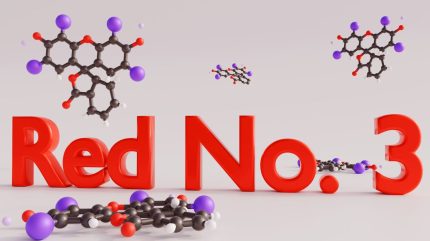
The US Food and Drug Administration (FDA) plans to ban the use of the so-called Red 3 food colouring additive in food, supplements and ingestible drugs.
Also known as erythrosine, or FD&C Red No. 3, the synthetic dye gives a bright, cherry-red hue to products and has been widely used in confectionery, cookies, frozen desserts and for icings, as well as medications, according to the FDA.

Discover B2B Marketing That Performs
Combine business intelligence and editorial excellence to reach engaged professionals across 36 leading media platforms.
Manufacturers using Red 3 in food and drugs must reformulate their products by 15 January 2027 and 18 January 2028, respectively, the regulator said. While other countries permit its use, imports will have to adhere to US standards.
The decision follows a 2022 petition by the Center for Science in the Public Interest (CSPI) and 23 other organisations and scientists urging the FDA to prohibit the usage of Red 3, according to the CSPI.
CSPI said in a statement that the petition was based on “long-established evidence that the dye causes thyroid cancer when consumed by animals”.
The so-called Delaney Clause “prohibits FDA authorisation of a food additive or colour additive if it has been found to induce cancer in humans or animals”.

US Tariffs are shifting - will you react or anticipate?
Don’t let policy changes catch you off guard. Stay proactive with real-time data and expert analysis.
By GlobalDataIn 1990, the FDA restricted the use of Red 3 in cosmetics after evidence linking it to cancer in lab animals.
However, the FDA explained that the cancer-causing mechanism in rats does not occur in humans, which previously did not prompt a ban on Red 3 in food.
It explained: “Relevant exposure levels to FD&C Red No. 3 for humans are typically much lower than those that cause the effects shown in male rats. Studies in other animals and in humans did not show these effects; claims that the use of FD&C Red No. 3 in food and in ingested drugs puts people at risk are not supported by the available scientific information.”
In response, CSPI president Dr Peter Lurie said: “We are not surprised FDA has asserted that the risk is small, since it is a chemical they failed to ban for years, and they want to reassure the public that the agency has not been placing them at risk for decades.”
Lurie added: “At long last, the FDA is ending the regulatory paradox of Red 3 being illegal for use in lipstick, but perfectly legal to feed to children in the form of candy.
“The primary purpose of food dyes is to make candy, drinks and other processed foods more attractive. When the function is purely aesthetic, why accept any cancer risk?”
According to CSPI, in 2021, over 200,000lb of Red 3 were used in the food and drug industries.
The consumer advocacy group also advised parents to avoid all numbered dyes, including Yellow 5 and Red 40, due to concerns over their effects on children’s behaviour.
The FDA’s decision mirrors California’s October 2023 ban on the additive.
In a separate move, California Governor Gavin Newsom took steps earlier this month to curb the consumption of ultra-processed foods (UPFs) in the state.
On 3 January, he signed an executive order instructing state agencies to propose measures aimed at reducing exposure to UPFs and harmful food ingredients that may pose health risks.





